Showing top 0 results 0 results found
Showing top 0 results 0 results found
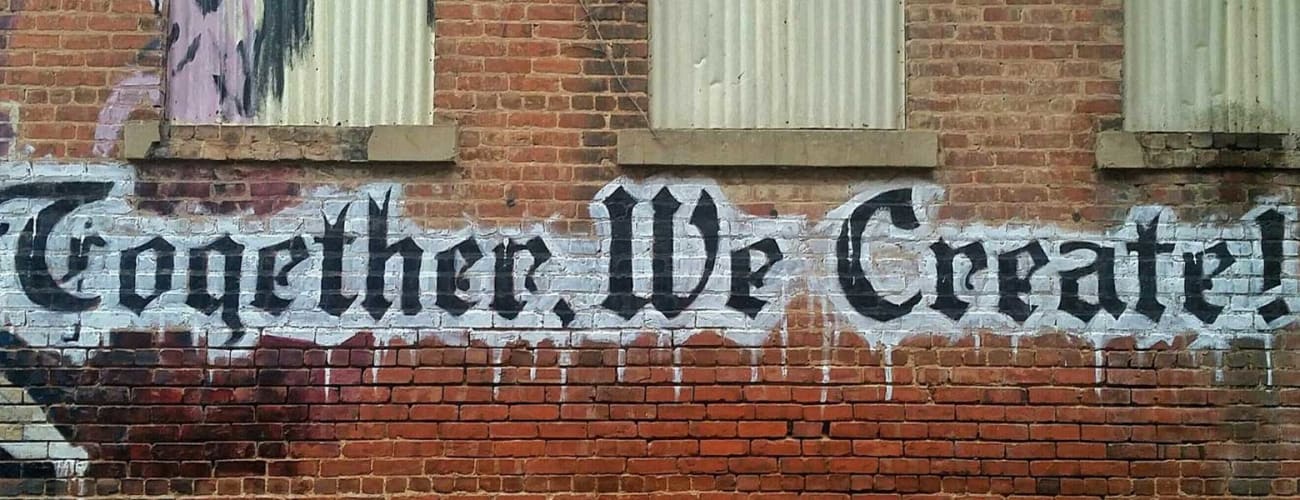
Brainstorming is the process of thinking that's supposed to drive new brilliant ideas, let them flourish and help your business take off. After all, somewhere there is a BIG idea that will break through and take your strategy to the next chapter.
But how does brainstorming actually work at your organization? Don't you feel at times like those sessions are just a dilly-dally and the best ideas come to you while you're outside, digesting issues on your own?
That is, of course, kind of natural.
Whatever business you are in, people come first. Smart, creative people on board are an essential part of your company's success because they bring quality and freshness to your organization. However, apart from people, you need to learn how to plan and execute an efficient brainstorming session to make it work.
Let's state this again: brainstorming can be resourceful, but it can be a waste of time too. Hence, to get to this idea, you have to come into control of how your brainstorming sessions look. There are some simple tricks that once applied can get you up and running and skyrocket your brainstorming process.
Why do you actually need to turn to the hassle of brainstorming in the first place? There are several possible reasons:
- You need new ideas;
- You need to solve an issue;
- You want your team to work better together;
- You are trying to improve creative thinking at your organization;
Whatever your goals of brainstorming are, practicing these sessions will bring in tangible results at your organization. Stimulate your team's activity and train their attitude from avoid-oriented to goal-oriented.
Now, let's see how you can actually stimulate inspiration at your company and manage better brainstorming sessions.
Design an Inspiring Space
The space we live in is everything.
It's because creativity lies in the way of living. Therefore, if you're craving for finding inspiring solutions to your business problems you need to establish an inspiring workspace first.
Don't ever think that exhaustion ever brought any freshness to your coworkers' minds. You need solid fundamentals to stimulate the creativity of your coworkers. In fact, we all need strong visual impulses to fly.
So when designing your new office, refrain from placing your team members into grey boxes if you want them to think outside the box.
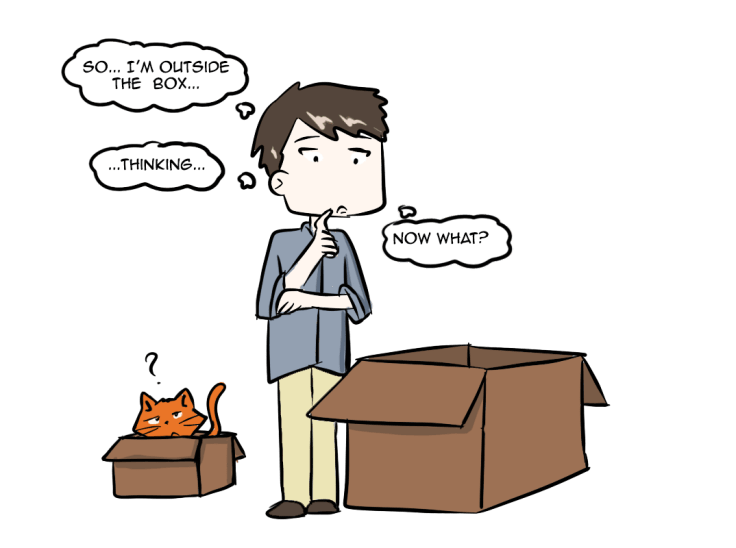
Make sure there are windows and green zones outside your office building. Also, bring plants inside your workspace and plant an office jungle if you can. After all, it's scientifically proven that flowers and plants clarify the radiation emitted by electronic devices, improve air quality and can help your team's health too. Also, they boost creative thinking.
Design your workspace with style. Invite colors, art and modern decoration, especially into rooms made for creative meetings. Have you seen offices of companies that are famous for their awesome stunt marketing campaigns?
Let's take a look at Spotify's office in New York City:
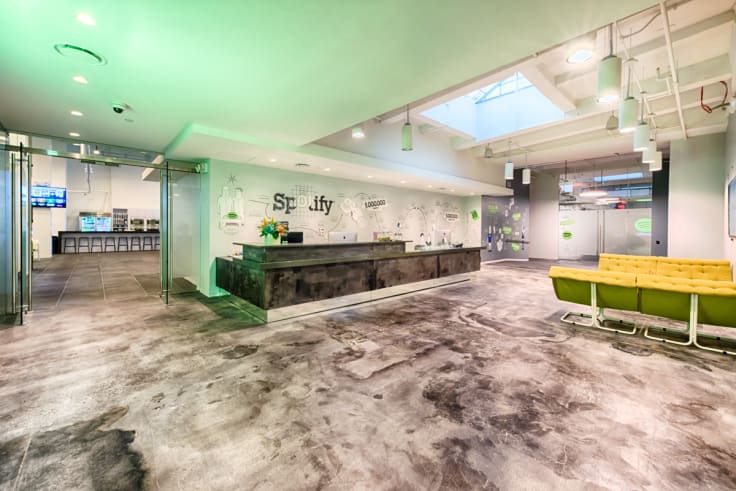

Or just glance at Uber's office in San Francisco:
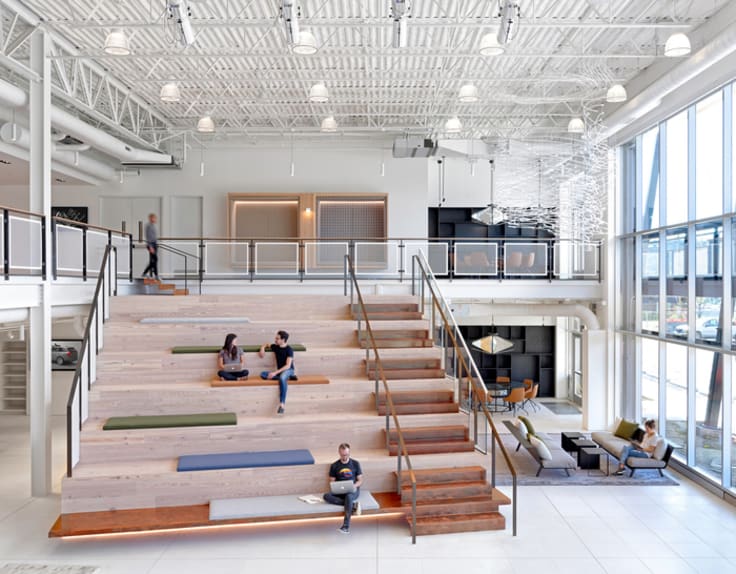
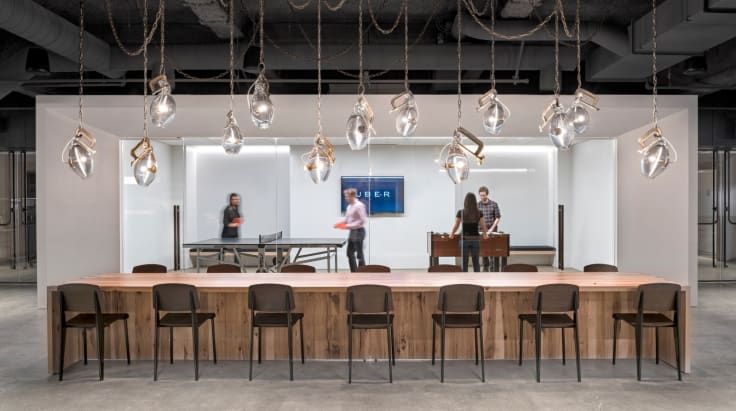
Doesn't it look like pure inspiration? To me, these two places look like dream offices where ideas can blossom without any effort and without any gravity.
Small elements together add up and lay the foundation for thinking BIG. These companies get it. And this contributes to their innovative nature. Of course, if you have the funds, don't hesitate; bet on nice office design, and it will have a strong touch on your coworkers' happiness, motivation, and vision.
Make the office employer-friendly.
Prepare Upfront and Tell People to Prepare
Okay, so you have the office. But there's more to it. It's also about timing and digesting your thoughts.
First of all, don't expect that your ideas will just flow when you start to process them in a meeting or right before it. Ideas sometimes come mixed in a blurry cloud, and they need time to become tangible.
It's better to schedule a brainstorming session and tell your people to prepare a few days upfront. Spend some time relaxing and thinking about the topic during the day. Whenever you are showering, brushing your teeth, jogging, walking your dog or simply commuting, instead of analyzing your day-to-day duties (or just wasting time), try to spend time thinking about ideas for a brainstorming session, and I can guarantee that you will find your inspiration in the least expected moment.
Ideas come unexpected, and you better be ready to catch them and note down right when they come to your mind. Okay, that's what you can do to build a healthy foundation to promote creativity at your organization. But how should you actually handle the meeting and the process itself?
Let's see:
Start the session with setting up goals
Once a brainstorming session starts, write on a whiteboard what the key questions are that you'll try to find answers for. That's a simple visual trick but this way you can help people stay focused and keep the discussion flow on the right track. Also, set a time frame. Don't let the meeting last forever.
Assign roles
1. Moderator
A moderator's role is about managing a brainstorming session and guiding it on the right track.
Assign this role to someone on your team who is seen as an authoritative figure and also does well at playing a leader. This person should be outgoing, social and able to provide direction in an un-authoritative way. This should also be someone who has a thorough understanding of your project. The brainstorming process should be easily managed so that people feel comfortable attending it. Only this kind of atmosphere will promote creative thinking. A good moderator needs to understand it. Furthermore, a moderator should be an unbiased individual who will draw out and synthesize ideas in a neutral way
Moreover, brainstorming session won't be successful if people don't know what their roles are in it. What are other roles other than a moderator?
2. Scribe
You'll definitely need someone like a scribe.

This person's task is to note down all the valuable insights and record the flow of a meeting. The scribe should be a participant of a session and contribute equally to others, but their primary task is to collect information so that nothing important goes into oblivion.
3. Naysayer
Another essential brainstorming role is a naysayer.

This is a contributor whose role is about having doubts and producing questions that might impair an idea or validate it. It's like in court when there's an attorney and a prosecutor and they all have to fulfill their role to make their case.
Therefore, a naysayer is essential to start the argument and give concepts a skeptical view. It's a challenge to overcome before an idea can be accepted and implemented at the organization. Once an idea is defended well, all participants can be sure it's bulletproof.
4. Decision maker
And there's also a decision maker.

This role depends on a given project because the decision maker role usually belongs to a project manager. Although brainstorming sessions may feel free and by their nature democratic, the final call belongs to a decision maker so that it isn't a democratic solution. It's a solution that feels best for a product manager.
Other attendees that come in should represent their disciplines and bring their specific expertise into a discussion to talk things over from all perspectives and settle on a solution that seems okay for everybody involved.
Use Your Whiteboard Often
Needless to say, humans are visual creatures and also sketching invites creative thinking. Therefore, sketch and write on your whiteboard any ideas that are talked about. Whether it's about formulating the onboarding process, structuring your marketing funnel or planning a site's redesign, it's always helpful to visualize it and see if it looks natural.
This will also double check if all brainstorming session participants are on the same page. Remember, an idea can be seen differently depending on a role. Designers can view it differently than a content marketer or a front-end programmer. So drawing things will resolve the confusion and make sure that everybody knows exactly how thing are going to be done and what results will be expected.
Also, don't assume that you'll remember the details of your brainstorming session a few days after a meeting. That's the why they should be fully fleshed out to understand precisely what the idea is about. This way you'll be able to review it later and recall the primary assumptions.
Other Brainstorming Essentials
→ Proceed with brainstorming sessions only if necessary. This means that you shouldn't organize a brainstorming session when you already have your solution in mind. Then it would be just a waste of time for people who are involved with it, and you should be aware of your people' precious time.
→ Start your brainstorming session generically and gradually get down to the details. Begin with a general thought, shed some light on some discussed problems and try to define the key aspects of it first. Divide it into segments and then go deeper into each of them.
→ Also, keep in mind that no ideas are bad ideas. Let contributors express their ideas freely and don't judge them at this point. Even if the ideas aren't realistic and can't be implemented at your organization that's is the moment of freedom when they actually should talk spontaneously. Also, it's because of time optimization. Brainstorming session serves to produce ideas, not validate them. You'll have time, later on, to explain and justify why the given idea is good or bad.
Okay, that's it for the time being. Hope you know now how to organize a brainstorming session at your company. You have the theory; now it's time to put it into practice!
Have any questions? Ask them in the comments below.



